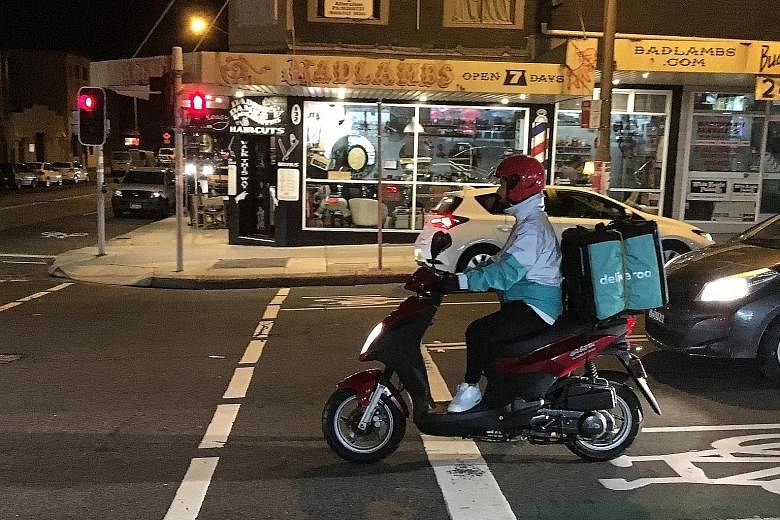Earlier this year, restaurant manager Andrew Jeffreys decided to open a new outlet for his trademark fried chicken but, unlike his other establishments, this one would not involve an actual restaurant.
Instead, customers order his famous olive oil fried chicken by delivery only - the latest in a new trend of so-called "ghost restaurants".
Farmer Chicken opened in May in the city of Brisbane and is delivered by UberEats, the food delivery website and app.
"We saw there was an opportunity to start Farmer Chicken without having to invest a million dollars in a shop," Mr Jeffreys, the co-owner of Farmer Chicken, told Queensland's Courier Mail. "It is a really disruptive time in the industry. Everything is changing so fast."
Ghost restaurants have been popping up fast around Australia, the latest business model to disrupt traditional businesses. Some have no storefront, others are daytime cafes which close at night but now provide dinner by delivery only.
The delivery market is reportedly worth A$3.5 billion (S$3.8 billion) in Australia and is expanding at a rapid pace. There is no specific data on how many meals are delivered a year, but estimates range from 200-330 million annually, or some eight to 14 meals per person.
On the streets of cities such as Sydney and Melbourne, food delivery vehicles - especially bicycles, scooters and motorbikes - seem to be everywhere. It has become an increasingly competitive sector, dominated by United States food giant UberEats as well as British firm Deliveroo, Berlin-based Foodora and Menulog, an Australian business bought by British firm Just Eat.
Mr Russell Zimmerman, executive director of the Australian Retailers Association, said the boom in delivery services was helping to attract new customers to cafes and restaurants, and was expanding the overall sector.
"People can sit at home, download a movie and know the meal will turn up," he told The Straits Times. "It is changing the atmosphere around dining. You have people living in units and townhouses who possibly don't do as much cooking as people who lived in houses did years ago."
Mr Zimmerman said turnover growth in the food sector - about 6 per cent annually - was now almost double the increase in the overall retail sector. The delivery services have helped traditional food outlets stay open for longer hours and assisted with jobs growth, he said.
"We are seeing more people employed in the industry," he said.
"Chefs and dishwashers are being hired for longer hours."
High-end restaurants have been joining the app-based services, though not as quickly as more casual dining venues. McDonald's made headlines last month when it became available via UberEats.
"We kept on getting messages from customers saying 'Why aren't you guys on Uber and why can't I order it? When are you going to do that?'" Mr Shaun Ruming, chief operating officer of McDonald's Australia, told news.com.au last month.
"We think that's an important thing for us to be involved in."
But the rapid growth of the delivery sector has raised concerns about the pay, work conditions and safety of delivery staff. Some delivery cyclists claimed they earned as little as A$10 an hour - well below the minimum hourly pay of A$23.45 for casual bicycle couriers.
Commentators and lawyers have urged the government to regulate the sector and ensure drivers get fair conditions and job security.
Another criticism of the delivery services is that they could lead to the demise of brick-and-mortar restaurants.
UberEats strongly denies the suggestion. It launched in Sydney in July last year with about 100 outlets and has since reportedly expanded to more than 1,000, extending its range from select suburbs to most of the city.
"For the most part, the restaurant partners we work with aren't seeing a reduction in people going in," Mr Simon Rossi, general manager of UberEats in Australia and New Zealand, told Fairfax Media.
"People still love to go to restaurants. But sometimes you are short of time, don't feel like going out and don't feel like leaving the house."

